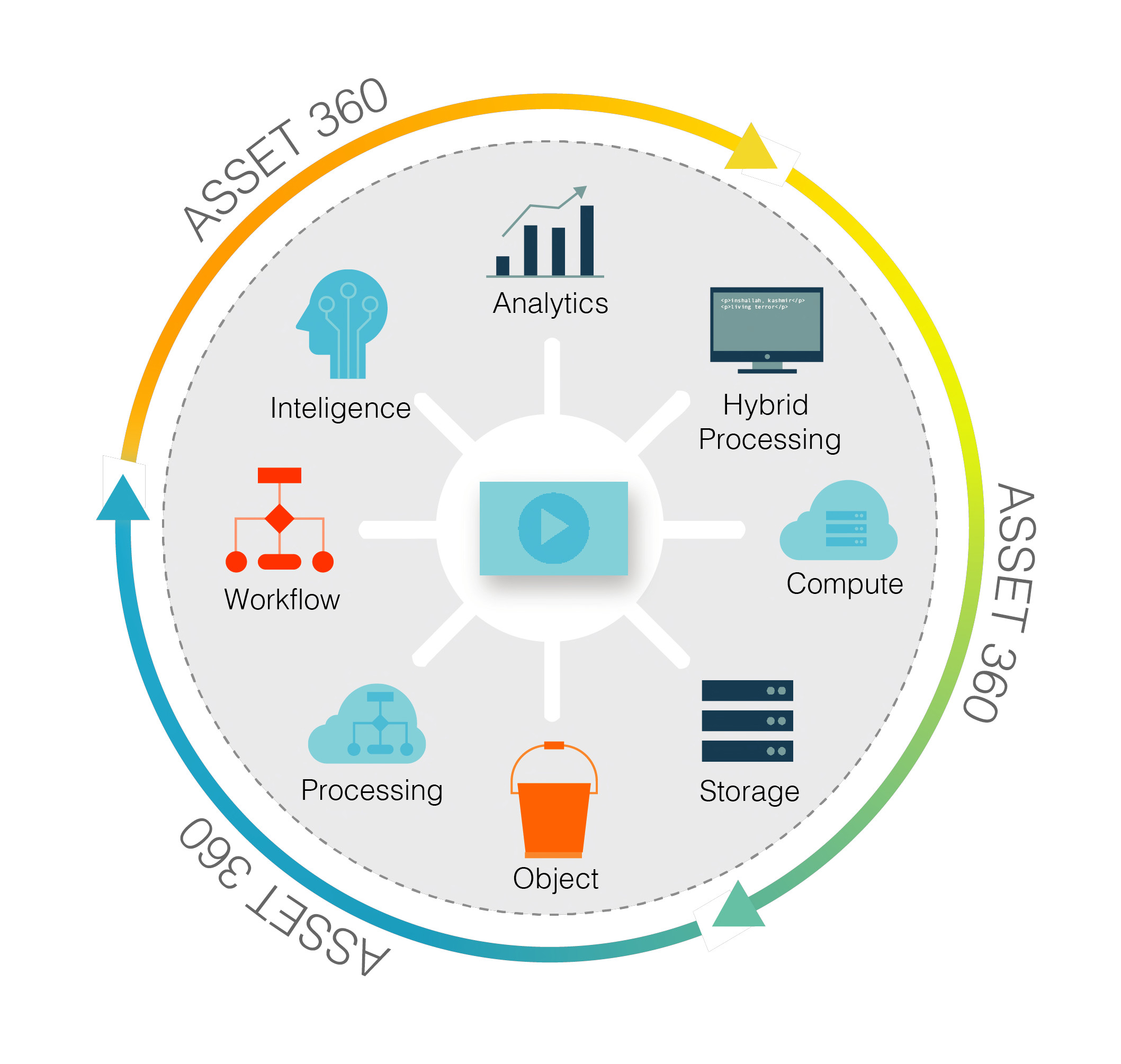Understanding Your Data
Virtualization technology has already arrived in the broad world of smart business where automation and predictability hold the key to monetization. Industries such as telcos, manufacturing, energy, financial services and retail, among others, successfully adopted the cloud some time ago. However, when you look at the broadcast, media and entertainment sector and its vendors, it’s somewhat behind the curve. As a broadcaster, if you aren’t considering or testing cloud technology at this moment in time when other sectors have already made lucrative gains, then your business model is at a high risk of failure.

Long-established vendors in the world of broadcast, while still having a role in specialist functionality, are now joined—and arguably superseded—by a new influx of service providers. On the one hand, there are cloud companies like AWS, Azure and Google; on the other enterprise business management services like Salesforce and SAP.
MOVING FROM CAPEX TO OPEX
Over the last few years, these companies have broadened their feature sets to the point where the line on which one product finishes and another starts, has blurred beyond recognition. These "new" players are introducing completely new ideas when it comes to managing and delivering content, based on processing, connectivity and storage, while at the same time enabling the move towards new business models.
As one of the first companies in the U.K. M&E space to adopt a ‘cloud-first’ strategy and the first AWS certified M&E partner in the U.K., Support Partners are well versed in utilizing these disruptive technologies. As a company, our goal is to help all of our clients migrate parts or all of their infrastructure to the cloud by 2020.
Making the move from CapEx to OpEx is potentially transformative for the business models of content creators and deliverers. The OpEx model allows a direct link between costs and revenues, dynamically scaling on demand to capture those new opportunities. That, in turn, allows you to understand where profitability lies, and therefore concentrate on the more commercially compelling services.
Cloud technology is inherently agile. You can add new services, whether that is 4K Ultra HD production or machine learning for automated logging, simply by spinning up the appropriate microservices in the cloud.
A software-defined network allows you to move to a business-driven operation. Instead of someone in marketing asking for a channel and someone in engineering saying it will take six months to get it online, executives working in enterprise management software like Salesforce will be able to run a what if? exercise and immediately see how financially and operationally viable a new service would be.
[Read: It’s A Very Cloudy Forecast For 2021]
However, for most organizations it is daunting to make the jump to being cloud first, so where is the sweet spot between on-premises hardware and the cloud? Do you hand everything over to AWS, Azure or Google? Or do you use the cloud for its elasticity, stepping in when your on-premise hardware is at full stretch? And, if the latter, how do you know just how much hardware you should have on site so that it will be running close to capacity most of the time?
UNDERSTANDING SCALE
In a traditional broadcast architecture, the experienced system designer would look at a requirement and have a basic understanding of the scale. An installation might have, say, around 400 device ports, so to be safe the architect would specify a 512 x 512 router. Having set the size, the procurement people could talk to a selection of vendors and get the right deal on the right device. This CapEx model means that you can’t easily scale up without more investment or indeed scale down as and when required, plus you are tied to specific vendors.
In a virtualized environment the scale is equally vital when provisioning a system but it is far less readily understood. How many processor cycles do you need to render a 4K animated title sequence? How much storage do you need to edit a 13-part drama? How much additional processing power can you afford to call on in the cloud before you have to say a process will have to wait—and who makes that decision?
The answer: you need to understand the data. Not the content and its metadata, but the usage data. How much storage are you using and for how long? How many processors do you need, how many are in continual use and how many do you call on when a lot is happening?
Now the chances are you already have some cloud contracts or at least are negotiating at this very moment. The IABM/Devoncroft research published earlier this year said that 85 percent of broadcasters think they will be using the cloud in the next two to three years and 28 percent are already using it.
If you already have a cloud contract, did you get a good deal? It can be hard to tell when file transfers are billed by the gigabyte, processing by the minute, and asset management by the terabyte of storage.
This is a multi-dimensional matrix. The cloud provider will have a set of fees, which may include some hefty surcharges if you go over a certain level. The software provider will also have its own licensing model, which will be based on different parameters such as usage, nodes activated, codecs used etc.
The people providing media-specific software used to sell broadcast hardware. They have had to re-engineer their own businesses from a cash flow position where they received 100% of the value of a sale at the point of acceptance, to one where they are maybe hoping to get a recurring license of 20 percent of the value each year for five years. Their natural instincts are to ensure their return by nudging the license fee up; you may find yourself paying 25% a year, with the expectation that you will still be there five years from now. So, how can this be avoided?
AT A GLANCE
The solution is to have a means of monitoring and evaluating all the data and presenting it on a single pane of glass. If you were making something physical – a car, say – then you would want to be able to see the complete supply chain from component to customer on a single dashboard. Why should it be any different for the manufacture of intellectual property, like a television program or a commercial?
The solution surely lies in an integration between the broadcast and management infrastructures. Platforms like Salesforce have the dashboard functionality: you need to integrate it with the media technology to monitor trends, track usage and provide actionable insights.
Taking this approach builds an accurate, trusted dataset, derived from all available sources. Usage is reconciled between on-premise hardware and software services and cloud providers. That, in turn, gives you a real insight into how your transition to virtualisation and the cloud is performing.
More importantly, it allows you to apply predictive data analytics to do the what ifs? for your future plans. If you know accurately what you need in terms of processing, connectivity and storage today, you are in a strong position to make decisions for the future.
You know if you have a good deal today (or not), and you know what you want to achieve when you renegotiate. Armed with predictive data requirements, you are in a much stronger position to compare bids and costs. You are no longer locked into your current vendor for fear of getting a worse deal. You can use predictive analytics to understand how best to apply automation and machine learning, which microservices to spin up, and determine which spot instances are the best value at any particular time.
There is no doubt that the future for media is all about predictive automated workflows, running on software-defined architectures in virtualised environments, on-premise and in the cloud. Provisioning these systems calls for new skill sets and a new way of thinking.
At Support Partners, we have implemented predictive data analytics for one of the world’s biggest production and broadcast companies, but it is applicable to any media company. If you are not capturing your operational data today, you will not know where you are tomorrow. That will be the difference between commercial stability and the risk of failure.
Harry Grinling is the CEO of Support Partners.
Get the TV Tech Newsletter
The professional video industry's #1 source for news, trends and product and tech information. Sign up below.
